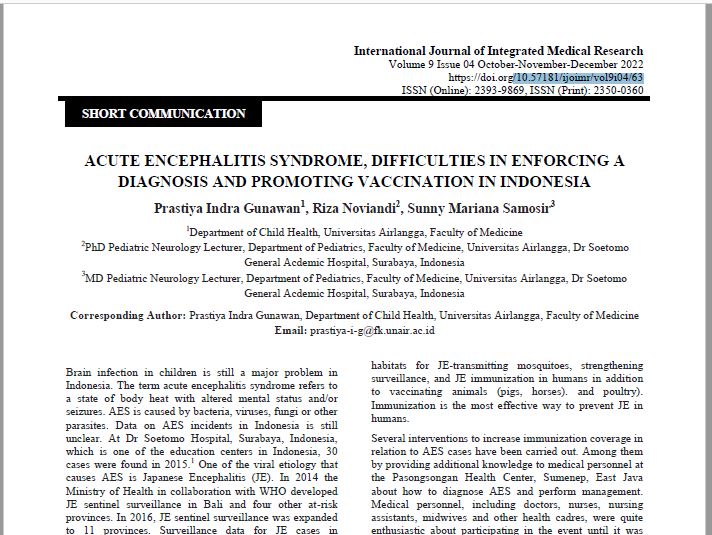Acute Encephalitis Syndrome, Difficulties in Enforcing a Diagnosis and Promoting Vaccination in Indonesia
Main Article Content
Abstract
Brain infection in children is still a major problem in Indonesia. The term acute encephalitis syndrome refers to a state of body heat with altered mental status and/or seizures. AES is caused by bacteria, viruses, fungi or other parasites. Data on AES incidents in Indonesia is still unclear. At Dr Soetomo Hospital, Surabaya, Indonesia, which is one of the education centers in Indonesia, 30 cases were found in 2015.1 One of the viral etiology that causes AES is Japanese Encephalitis (JE). In 2014 the Ministry of Health in collaboration with WHO developed JE sentinel surveillance in Bali and four other at-risk provinces. In 2016, JE sentinel surveillance was expanded to 11 provinces. Surveillance data for JE cases in Indonesia in 2016 showed that there were nine provinces that reported JE cases, including the Provinces of Bali, West Kalimantan, North Sulawesi, East Nusa Tenggara, DKI Jakarta, DI Yogyakarta, Central Java, West Nusa Tenggara, and Riau Islands. . The results of sentinel surveillance 2016 in 11 provinces showed that there were 326 cases of AES with 43 cases (13%) of which were positive for JE. As many as 85% of JE cases in Indonesia are in the 15 year age group and 15% in the > 15 year age group. Most JE cases are in the province of Bali.
